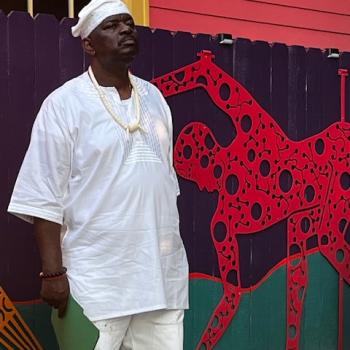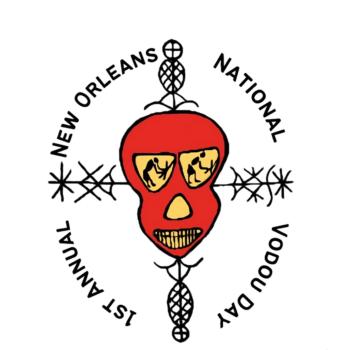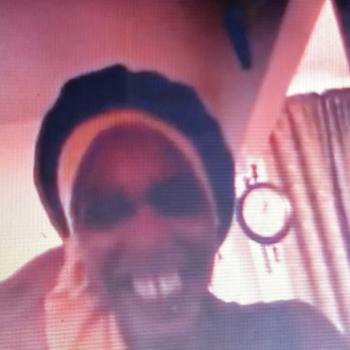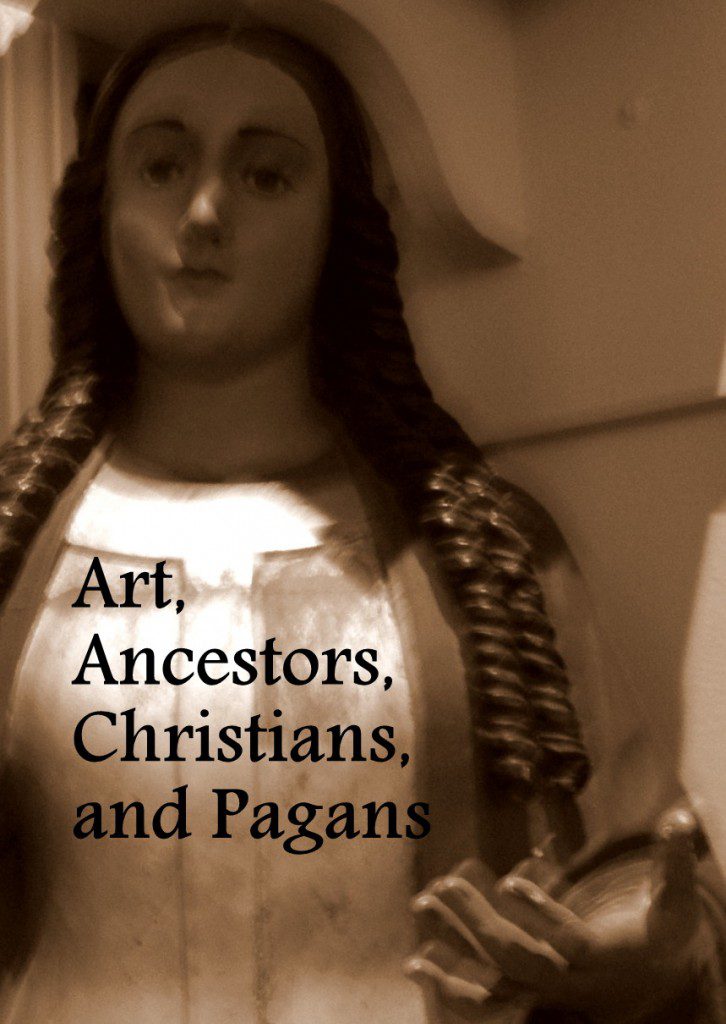
Welcome to the Patheos month long Ancestor Remembrance project, which pairs Pagan and Non-Pagan bloggers together to discuss our honored dead. I have been paired with Michael Hardin, and his first installment “Ancestors in Christianity: The Artistic,” was posted this week, the following is my response. Hardin will also be posting a response today talking about my artistic ancestor post. It is pleasing to see Hardin bring up the concept of remembering those who live on in spirit. In New Orleans Voodoo and Haitian Vodou, all our worthy dead live on in spirit. In part they become worthy through a combination of their earthly actions and our actions on their behalf after death. In the Voodoo religion it is not just Jesus and the saints who have a chance to become divine, we all do. One of the ways in which we do this is through devotional art, like the Voodoo Flags I talked about.
I was also excited to see Hardin’s inclusion of the 787 C.E. discussions that deal with artistic images of the Saints and Jesus. Hardin makes the important distinction “between veneration and worship of icons.” It’s a fine line as far as I can tell, but an important distinction they feel they must make. For Voodoo and Vodou worshipers we have a hierarchy of Gods, with many spiritual houses also structuring their worship in a similar way: They have one major god called Bon Dye (Good God,) and all the others are seen as supporters of his/her divine creation. That said, the relationships with these other energies, called Loa/Lwa, can be way more intense than practiced in the Christian faith. Some enter into spirit marriages with these divinities, build them rooms in their home, name their children after them, and much, much more.
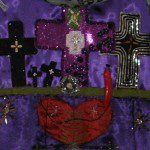
Hardin brings up the point that artistic representations allow worshipers, of all ages and educational levels to learn, connect, and better understand the divine. Haitian Vodou flags are commonly referred to as a “poor man’s stained glass.” Flags, just like their Christian glass counterparts are designed to tell a story, or describe a holy person or event. A visual representation allows the story to be told to a wider audience, people of any age or literacy level can instantly understand what is being communicated. One thing that strikes me as ironic as we being the ancestor remembrance discussions is how many customs are similar in these two traditions. Many Voodoo and/or Vodou practitioners are also practicing Christians, and that has been the case since Christianity began. Many followers of African Traditional Religions were forced or inspired to convert under the systems of slavery and colonialism. In addition Voodoo has always been a religion that incorporates whatever it deems fit from other traditions. This practice has often been referred to as Syncretism, and you can find out more in my post “Saints, Sinners, Statues and Syncretism” in Santeria and Voodoo. There are also individuals that have danced the line between the two religions, and the statues for them have become holy relics in their own right (rite.) Most specifically I am thinking of the statues of St. Dymphna and St. Expedite that grace the International Shrine of St. Jude in New Orleans. They have become a special place of prayer for those throughout the city and the world.
Worshipers in the Voodoo and Vodou religion are dedicated to remembering and connecting with their ancestors in all possible ways. Art is one of the most universal manifestations of this desire. I talk about this extensively in my book 55 Ways to Connect to Goddess, and will continue to talk about it here in the Voodoo Universe. Let us know what you think in the comments below!
This post is part of the Patheos Pagan Ancestor Remembrance Project.





